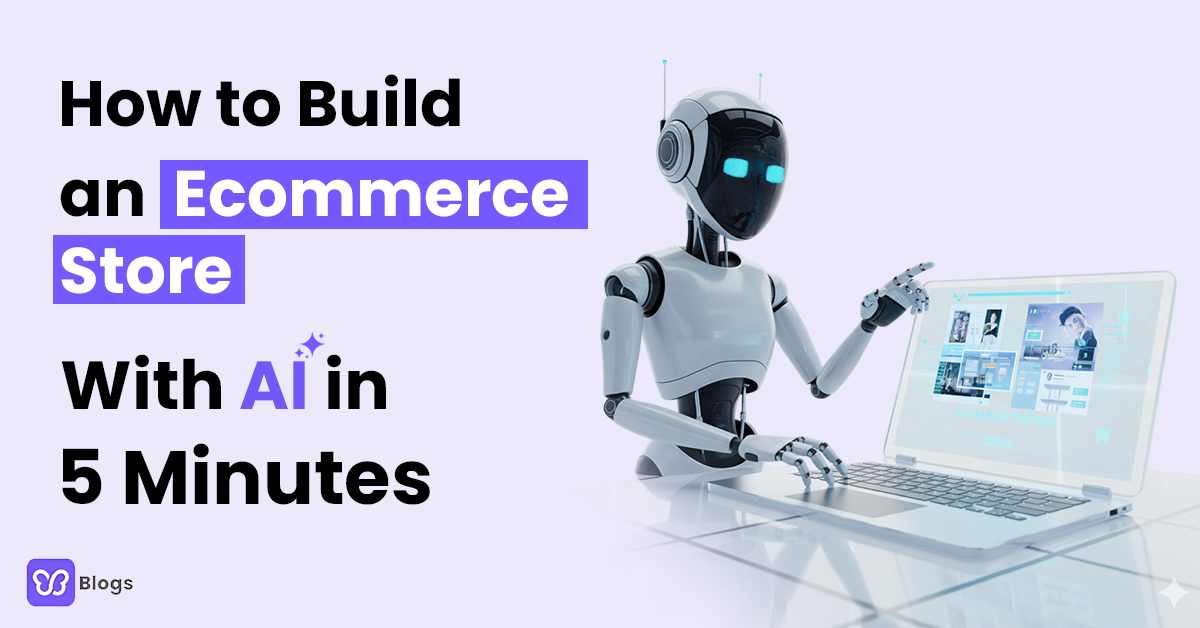When you go to your local supermarket, you know exactly where to go, right?
For example, fruits and vegetables are on the ground floor. Cosmetics are available right to the front aisle on the second floor. The third floor is for clothing, and so on.
But that’s not how people find things when they shop online.
Customers enter your website and use the search feature to find products they need.
Did you know up to 30% of visitors use a site search feature when it is offered?
That means you’ll be missing out on an enormous amount of sales. Especially if the search feature on your website isn’t optimized.
But I won’t let that happen.
I want you to stay with me and keep reading as I talk about:
- Internal site search benchmarks
- How to improve internal site search
- Mistakes to avoid for better internal site search optimization
After reading this post, I am sure you’d be able to benefit from your internal search feature like never before.
So, let’s start with some numbers first...
Internal Site Search Benchmarks
In a time when users have grown accustomed to Google and Bing, they won't settle for anything less. In fact, 68% of buyers will abandon your site because of a poor search experience.
Site search will not only help you improve your user experience but also conversions.
The average conversion rate across all websites is 2.77%. But did you know it can reach 4.63% with the internal search feature?
Another study reveals that 84% of users want to solve their own problems using search.
Now, what does that mean?
It means you can reduce the cost of your customer service when your search feature is in place. Customers can then find the products themselves instead of contacting support agents repeatedly.
So, let's talk about why internal site search is killing your conversions. And what you can do to optimize your on-site search.
Let's dive right in...
Why Internal Site Search Is Killing Your Conversions?
Ecommerce conversions depend on many things, including user experience, speed, and efficiency.
Internal site search optimization reduces friction in the search experience. Also, it improves UX for site visitors.
The result?
People will spend more time on your website. They will enter more terms in the search box to find out their desired products.
Not only this, but your site search feature also uncovers customer intent. It provides you with a chance to know about customers' interests and buying preferences.
Let’s take the example of Macy’s here.
What do I love about their internal search feature?
- It's visible
- It's smart (displayed a range of options even before I finish writing my query)
- Displays best-sellers with thumbnails
- Their filtering options are out of this world (from brand and size to sleeve length and apparel occasion, there are many options to help you narrow down your choices)
In 2020, Macy’s global net sales amounted to about 17.3 billion U.S. dollars.
What does that reflect?
Macy's conversion funnel is powerful.
Now, compare your site's search feature with Macy's. If you haven't optimized it the way Macy's did, you'd miss a chance to reach where Macy's stands today.
Not sure where to start?
I'd suggest starting with identifying the site search mistakes. I am not exaggerating, but these mistakes can literally ruin your conversion efforts.
Internal Site Search Mistakes That Are Killing Your Conversions (And How To Fix It!)
Your Search Box Isn’t Visible
Your customers won't use your search feature if they don't see it.
Whenever you visit a fairly content-rich and complex website, you always look for a search box.
Let's look at Amazon as an example.
When I search for sofas and couches on amazon, it displays over 3,000 results. But their search feature is one of its kind. It's huge and visible. Nobody can skip this feature when making a search.
Impressive!
If you have nothing similar, here’s what you can do to fix it:
- Give it space. Don’t place it below or above any other important tab.
- Make your search feature prominent by adding a magnifying glass icon.
- Add an open text field next to your search box.
- Go easy with your search design and placement. The simpler, the better?
Where you place your search box can also make all the difference. Let's see how it affects your conversions...
Your Search Box Is Only Available On The Homepage
It is easy for visitors to lose their sense of direction when they visit your store for the first time. They can hit the back button once they felt lost.
You don't want that, right?
Here's how you can fix it:
- Display the search box on each page of your website (except for checkout pages, as it may cause distraction).
- For placement, I'd suggest checking a few competitors' websites. See where they have placed their search box. If it works well for them, perhaps it works for you as well.
Looking for inspiration?
Check Asos's homepage out…
When I click on the 'New in' tab, the search feature is still available.
Let’s check out the ‘Face + body’ tab. It is still there.
Your search box will act as a shopping assistant who's always there when your customers need it.
Another site search mistake that will affect your conversion...
There's No Autocomplete In Your Search Feature
A good site search should predict customer searches. An autocomplete feature is what you need.
You don't have an autocomplete solution on your site yet?
Then it would be hard to guide your customers to your most trending products and best-sellers.
For example, this is Swarovski's official website. When I type 'red' in the search box, the autocomplete feature displays the products in red.
You see, autocomplete is all about offering suggestions.
Sometimes customers use this feature to experiment with different keywords to explore options.
Search autocomplete not only improves the relevancy of results. But it also boosts conversions by making your visitors spend more time on your site.
Another internal site search mistake you need to note is that...
You Don’t Have Advanced Filtering Options
There's nothing more frustrating than getting 4,000+ search results.
I am sorry to burst your bubble, but you can’t expect them to sift through the clutter and find what they want.
So what's the solution? Advanced filtering is your answer.
Let's look at H&M as an example:
Isn't H&M's search filtering feature impressive?
Look at the number of options they have. ?
Impressive, right? You may give it a go. And see how it will work for your store.
Another thing you need to fix is when...
You’re Telling Your Customers That You Have Nothing For Them
There's nothing worse than seeing a ‘Sorry your search matches no results’ message.
It spoils your brand image and also affects your conversions.
Here’s how you can fix this:
Instead of telling your customers that you have nothing for them, you can return 3-4 other related product recommendations.
For example, when I type ‘paint’ in the Zappos search box, here’s what I get:
Yes, I know these aren’t paints. But they have showcased their most colorful collection.
Another big NO for internal site searching is when...
Your Site Search Isn’t Mobile-Friendly
Did you know that 50% of all internet traffic comes from mobile devices?
Your site search should offer the same experience to both mobile and web users.
Yes, that also includes load time.
Test your site search feature on different devices to see how it performs.
Also, no one will spend hours waiting for your 500+ products to load. So consider limiting the number of recommendations too.
Another site search mistake that can kill your conversions is...
Your Site Search Has Zero Tolerance For Errors
Your site search feature should be like your customer’s best friend - always accommodating and caring.
Some visitors are always on the go. You can’t expect them to tweak and refine their spellings and grammar for your site search.
It is your job to optimize your search engine for strong error tolerance.
For example, what if anyone types ‘tyos’ in your search engine?
No, you can't return 'No search results found.' Your search feature should know the user meant toys.
Here's what I get when I type 'hikng' instead of 'hiking' on Zappos.
Their search feature displayed all the results related to their hiking products.
The search feature on Zappos is smart. ?
What about yours?
You did it, we're almost done. Let's move on to the last mistake you need to fix.
Your Search Solution is Having Difficulty Interpreting NLP (Natural Language Processing)
NLP (Natural Language Processing) is the future of ecommerce site search.
Unfortunately, many ecommerce search solutions are still having difficulty translating NLP.
The thing is, customers will type a search query in the same way as they would say to a shopkeeper.
Let’s take a simple example here...
I usually type ‘black women’s shoe size 9 under $25’ when I buy shoes online.
That’s how your customer types.
If your search feature is finding it cumbersome to interpret this request, you need to fix it.
This saves visitors time and also speeds up the entire buying process.
Let's run a quick test. I typed the same search query in Nordstrom's search box.
This is what I got…
Your search feature shouldn't do this to your customers. It's heartbreaking. ?
How Can You Improve Conversions With On-Site Search, You Might Ask…!
Usually, your buyers have a clear idea of what they want.
The search feature on your site should be able to remove all the obstacles.
You can also use Debutify’s Smart Search add-on to help customers search results immediately.
Also, don’t forget to check our other UX design add-ons to improve the user experience on your site.
Fuel Your Site’s Internal Search Feature With Debutify!
One-Click Installation - No Coding Required!





